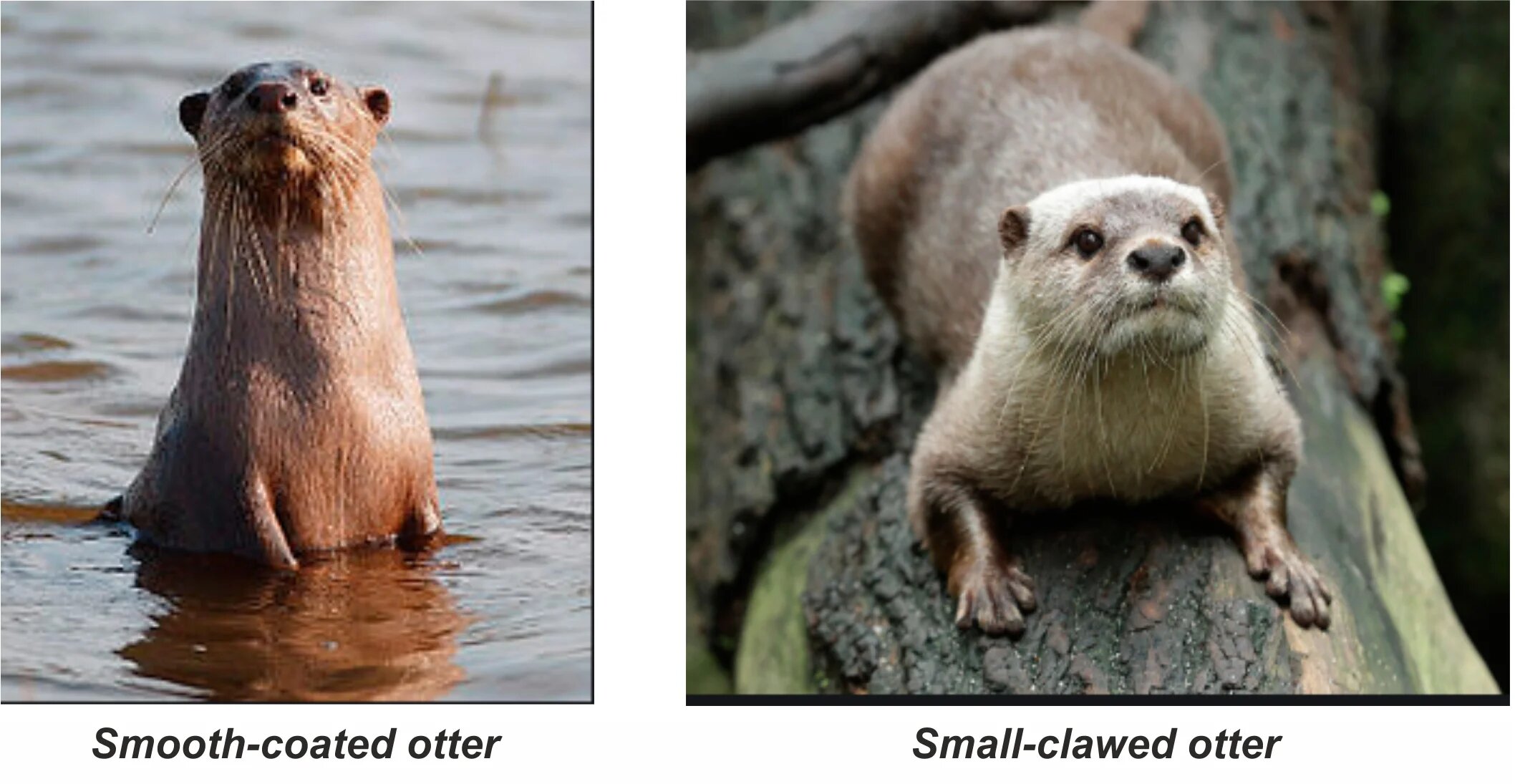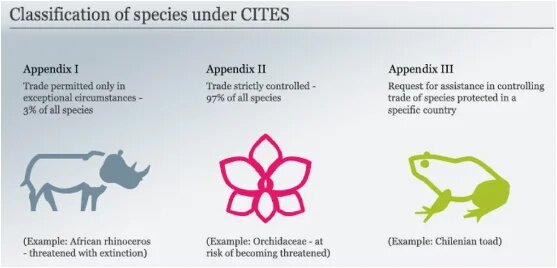Biodiversity & Environment
Proposals to Change in CITES Listing
- 10 Aug 2019
- 7 min read
India has submitted proposals regarding changes to the listing of the smooth-coated otter, small-clawed otter, Indian star tortoise, Tokay gecko, wedgefish and Indian rosewood in the CITES secretariat meeting, scheduled in August 2019 in Geneva (Switzerland).
Smooth-coated otter and Small-clawed otter
- Otters are found world over, except in Australia, New Zealand, Madagascar, and other oceanic islands.
- India is home to 3 of the 13 species of otters found worldwide. These are - Eurasian Otter (Lutra lutra); Smooth-coated Otter (Lutra perspicillata) and Small-clawed otter (Aonyx cinereus).
- The Smooth-coated Otter is distributed throughout the country from the Himalayas southward.
- But the Common Otter and the Small-clawed Otter are restricted to the Himalayas, to the north of the Ganges and to southern India.
- These otters have generally been described as fish specialist.
- Major threats to Asian otter population are loss of wetland habitats due to construction of large scale hydroelectric projects, conversion of wetlands for settlements and agriculture, reduction in prey biomass, poaching and contamination of waterways by pesticides.
- The International Union for Conservation of Nature (IUCN) has listed these otters under the vulnerable category.
- India, Nepal and the Philippines have proposed that the listing of these otters should be moved from CITES Appendix II to Appendix I.
Indian star tortoise
- Indian star tortoise is found across the Indian sub-continent, more specifically, in the Central and Southern parts of India, in West Pakistan and in Sri Lanka.
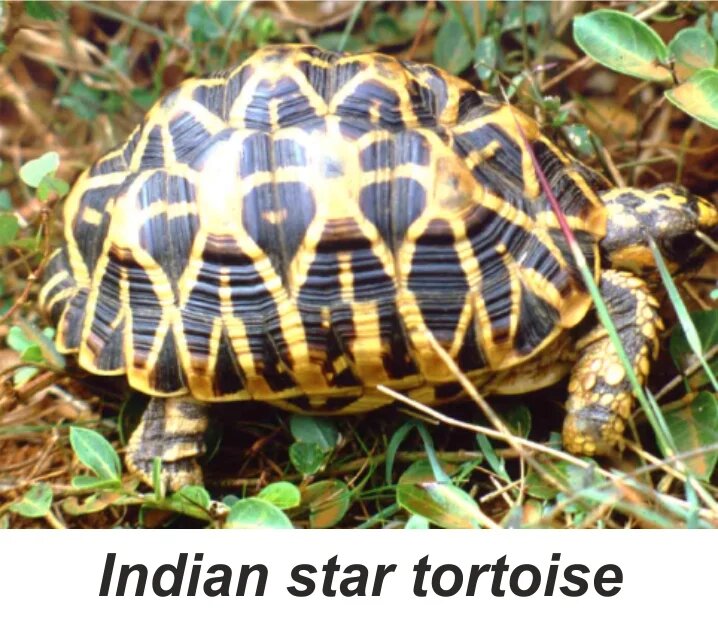
- Star Tortoises are protected under Schedule IV of Wild Life Protection Act, 1972 and Convention on International Trade in Endangered Species (CITES) of Wild Fauna and Flora.
- The IUCN has listed it under the vulnerable category.
- The species faces two threats: loss of habitat to agriculture and illegal harvesting for the pet trade.
- India is among the parties proposing the re-listing of the star tortoise from CITES Appendix II to Appendix I.
Tokay gecko
- The Tokay Gecko or Gekko gecko is one of the largest geckos (Lizard) in the country and the world.
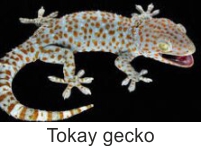
- This is a nocturnal arboreal gecko, ranging from northeast India, Nepal and Bangladesh, throughout Southeast Asia.
- Occurring in the rainforests, it is primarily a tree-dweller.
- It’s use as a traditional Asian medicine —everything from energy drinks to treatments for diabetes, cancer, and HIV/AIDS (there is no proof of efficacy in any of these uses), make it prone to illegal trade across borders.
- The IUCN has listed it under Least Concern category.
- India has proposed it’s listing should be moved from CITES Appendix II to Appendix I.
Wedgefish
- Wedgefish are shallow water coastal species, found in northern Indian Ocean and northwestern Pacific Ocean.
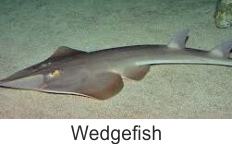
- Alongwith giant guitarfishes, they are collectively known as Rhino Rays because of their elongated snouts.
- They have been listed as the ‘most imperilled marine fish families in the world’.
- The main drivers of the decline are the loss of free flowing rivers and increasing agricultural and urban pollution.
- The IUCN has listed it under vulnerable category.
- Indian proposed to include Wedgefish in Appendix II of CITES.
Indian rosewood
- It is deciduous rosewood tree native to the Indian subcontinent, also grown in Nigeria, Kenya, Vietnam, the Philippines, and other parts of tropical Africa.
- It is used for making furniture, plywood, and decorative wood products.
- The species grows at a very fast rate and has the capacity to become naturalised outside its native range, it is invasive in other parts of the world as well.
- India has proposed to remove rosewood from Appendix II of CITES.
- Its IUCN Red List status is ‘vulnerable’.
CITES Appendices
- Appendices I, II and III to the Convention are lists of species afforded different levels or types of protection from over-exploitation.
- Appendix I
- It lists species that are the most endangered among CITES-listed animals and plants.
- Examples include gorillas, sea turtles, most lady slipper orchids, and giant pandas. Currently 931 species are listed.
- They are threatened with extinction and CITES prohibits international trade in specimens of these species except when the purpose of the import is not commercial, for instance for scientific research.
- Appendix II
- It lists species that are not necessarily now threatened with extinction but that may become so unless trade is closely controlled.
- International trade in specimens of Appendix-II species may be authorized by the granting of an export permit or re-export certificate.
- No import permit is necessary for these species under CITES (although a permit is needed in some countries that have taken stricter measures than CITES requires).
- Permits or certificates should only be granted if the relevant authorities are satisfied that certain conditions are met, above all that trade will not be detrimental to the survival of the species in the wild.
- Appendix III
- It is a list of species included at the request of a Party that already regulates trade in the species and that needs the cooperation of other countries to prevent unsustainable or illegal exploitation.
- Examples include map turtles, walruses and Cape stag beetles. Currently 147 species are listed.
- International trade in specimens of species listed in this Appendix is allowed only on presentation of the appropriate permits or certificates.
- Species may be added to or removed from Appendix I and II, or moved between them, only by the Conference of the Parties.
- However, species may be added to or removed from Appendix III at any time and by any Party unilaterally.

